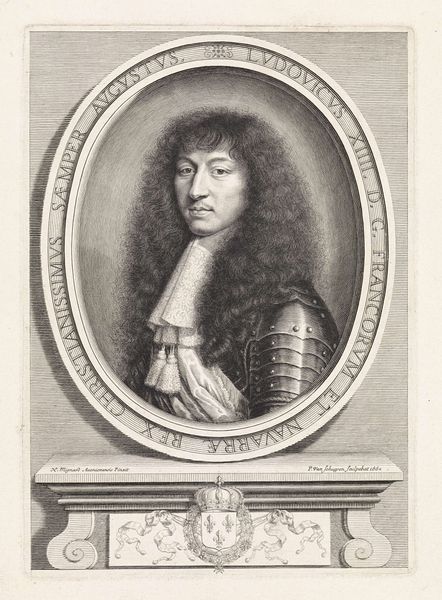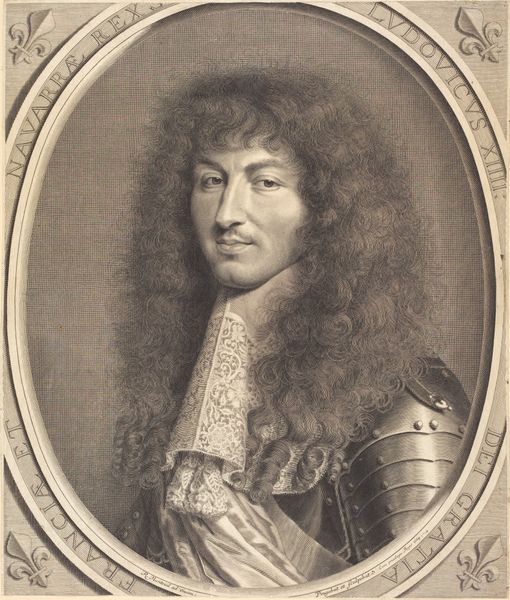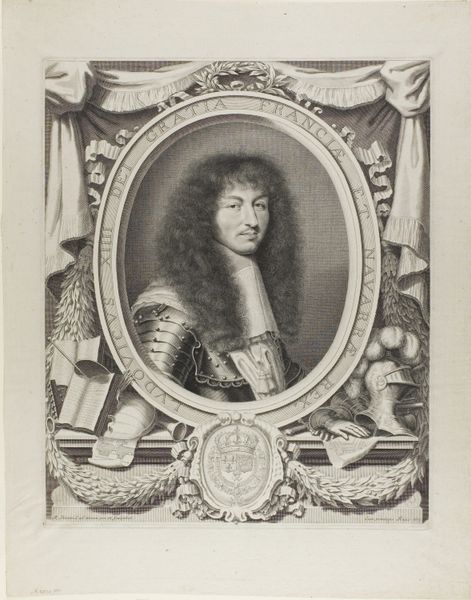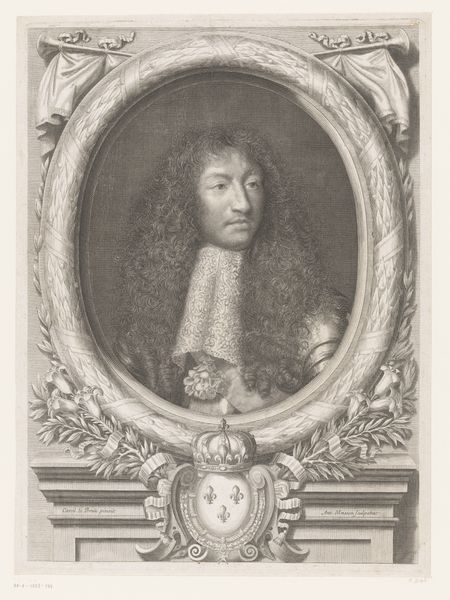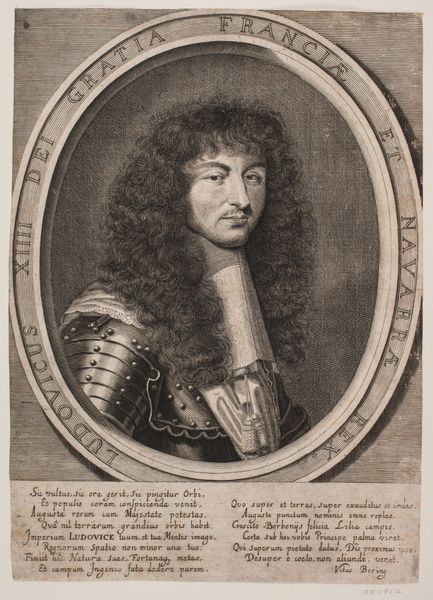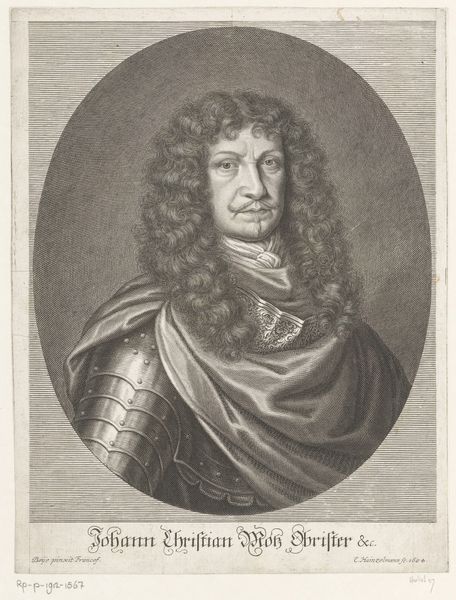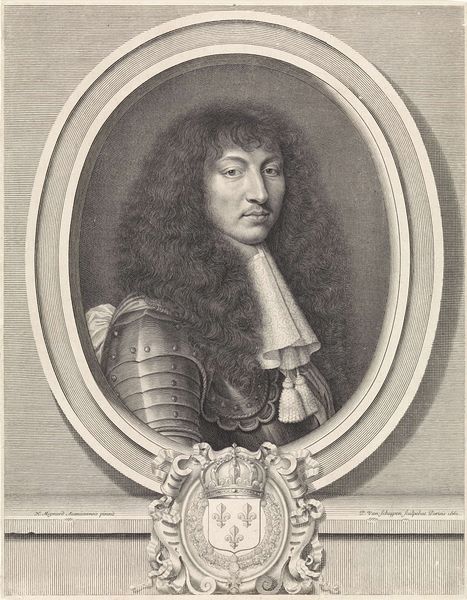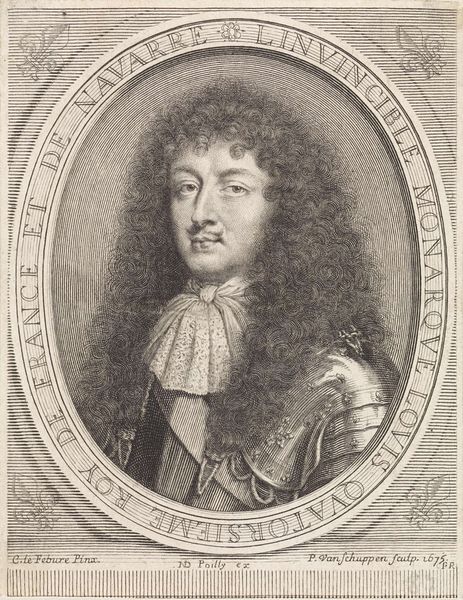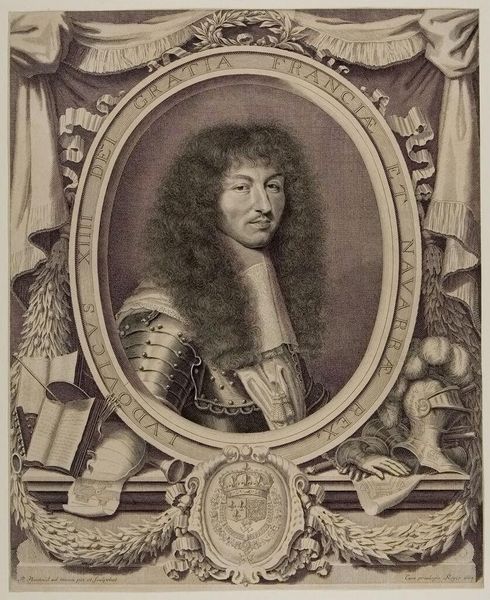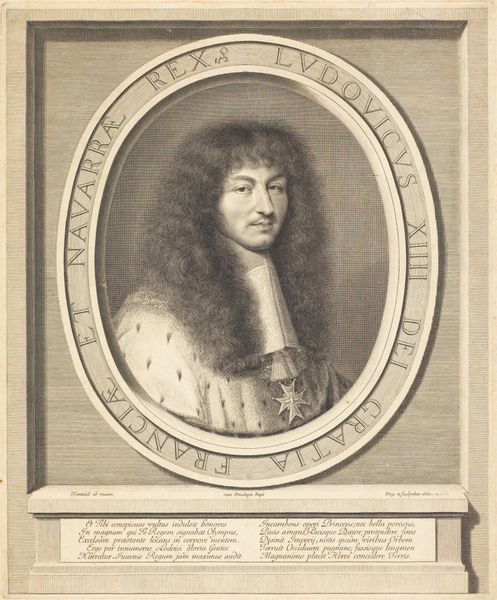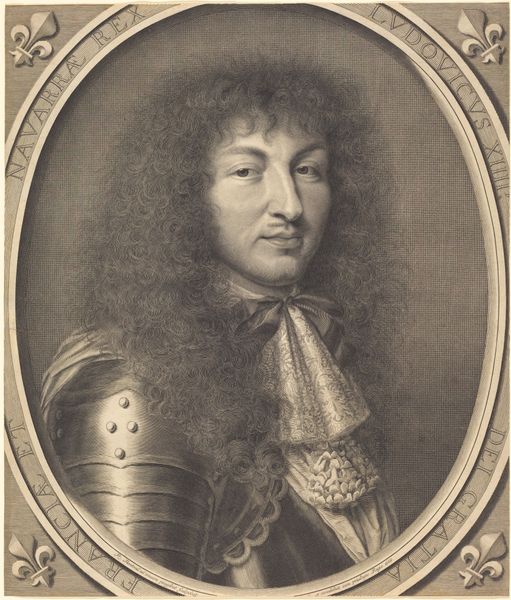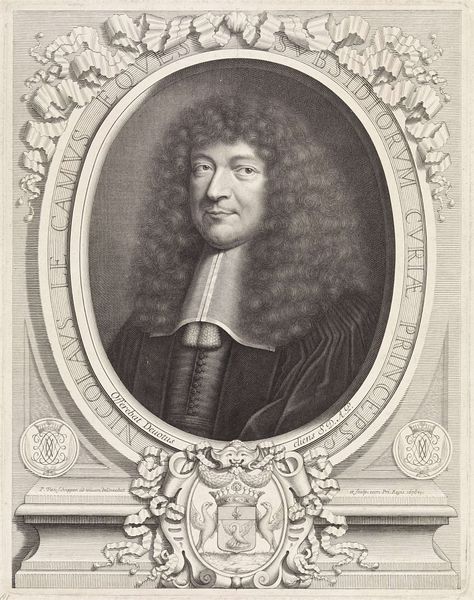
drawing, print, engraving
#
portrait
#
drawing
#
baroque
# print
#
line
#
history-painting
#
engraving
Dimensions: Sheet: 15 × 10 15/16 in. (38.1 × 27.8 cm)
Copyright: Public Domain
Curator: Well, here we have Robert Nanteuil's engraving of Louis XIV, created in 1667. It's quite a formal portrait, capturing the king in his regal splendor. Editor: First thought? It's all about that hair. Like a lion's mane, isn't it? It feels… deliberately powerful. Does anyone actually wake up looking like that? Curator: (Chuckles) Hardly! That elaborate wig was a crucial element of Louis's image-making. He understood the power of visual propaganda, presenting himself as an almost divine figure, chosen by God. Notice the inscription "Dei Gratia Franciae et Navarrae Rex Christianissimus"—"By the Grace of God, King of France and Navarre, Most Christian." Editor: The lace is another touch. So delicate, such intricate work... It's almost defiant in its opulence. What statement do you think the artist wanted to communicate to the public by portraying such rich and fine clothing. Curator: The portrait embodies the essence of Baroque aesthetics: drama, grandeur, and an overwhelming sense of authority. Consider this piece in context, produced during a period when the French monarchy was solidifying its absolute power. Nanteuil masterfully used line engraving to convey a sense of precision and controlled might. Every line seems strategically placed. Editor: Yet, there’s something also slightly melancholy in his gaze. It's in the eyes—they almost betray the weight of that crown. It seems to communicate the burdens, the heavy responsibility that accompanied absolute power. He looks very aware. Curator: That's a fascinating interpretation. I've always focused on how the engraving serves to reinforce Louis's self-fashioned image. How these images and items helped reinforce Louis XIV claim to being an absolutist monarch. Editor: Art always has so many layers. Seeing his power juxtaposed with an expression of somber reflection really gets you thinking. Even powerful kings might understand loneliness or anxiety. That perhaps makes this monarch human and approachable despite his station. Curator: I agree that it presents more layers the more you explore, bringing a more thoughtful, interesting interpretation. Perhaps what really endures from that era is the idea of powerful leaders making very intentional use of imagery for political gain. Editor: A fitting message for this moment as well; image-making remains crucial to so many aspects of modern culture. Food for thought!
Comments
No comments
Be the first to comment and join the conversation on the ultimate creative platform.
